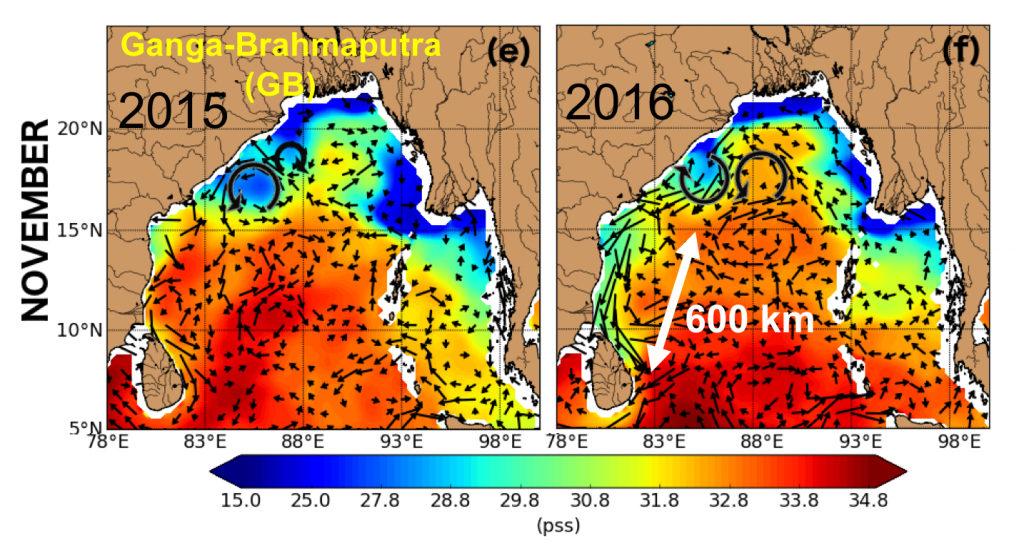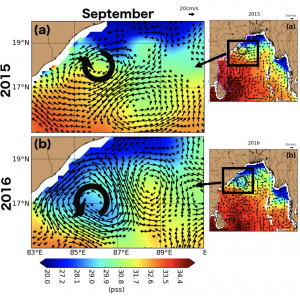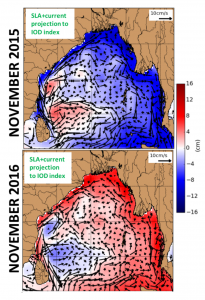

The Ganga-Brahmaputra River, located north of the Bay of Bengal, accounts for two thirds of the total river discharge within the Bay, mostly at wet monsoon time (Summer). This massive input of freshwater has consequences on biology, on mixing and on tropical cyclones within the Bay, the freshest sea in the tropics.
The extension of the Ganga-Brahmaputra river plume within the Bay of Bengal is controlled by the Indian Ocean Dipole (IOD), a coupled ocean-atmosphere process, and ocean dynamics (such as eddies), but not by river forcing. The negative Indian Ocean Dipole in the Fall of 2016 caused a stronger East Indian Coastal Current (EICC) and as a result, the river plume extended approximately 600 km further south than in 2015 (Figures 1 and 2). Eddies induced meandering of this plume, keeping freshwater close to the coast (Figure 3).

Both the freshwater plume and the ocean circulation are monitored from space – the freshwater by salinity/soil moisture satellites, the latest launched being SMAP, the circulation by altimetry, using DUACS multimission sea level anomalies and derived geostrophic currents. The two independent measurements are in very good agreement, and complement each other to better understand this region and its specific features.
References
- S. Fournier, J. Vialard, M. Lengaigne, T. Lee, M. M. Gierach, A. V. S. Chaitanya, Modulation of the Ganges‐Brahmaputra River Plume by the Indian Ocean Dipole and Eddies Inferred From Satellite Observations, Journal of Geophysical Research: Oceans – First Published: 8 December 2017
- S. Fournier, J. Vialard, M. Lengaigne, T. Lee, M. Gierach; A.V.S Chaitanya, Modulation of the Ganges-Brahmaputra river plume by the Indian Ocean Dipole and eddies inferred from satellite observations, Ocean Surface Topography Science Team Meeting, Miami, Oct. 2017